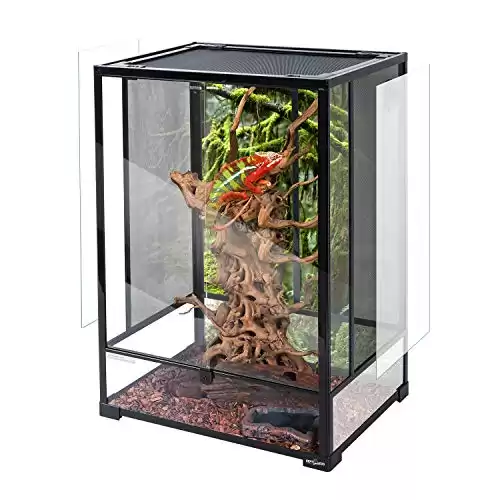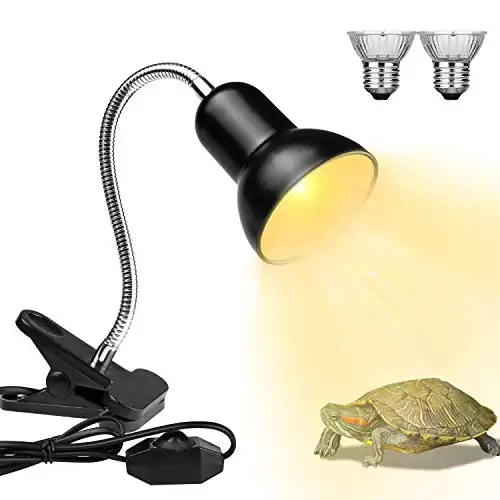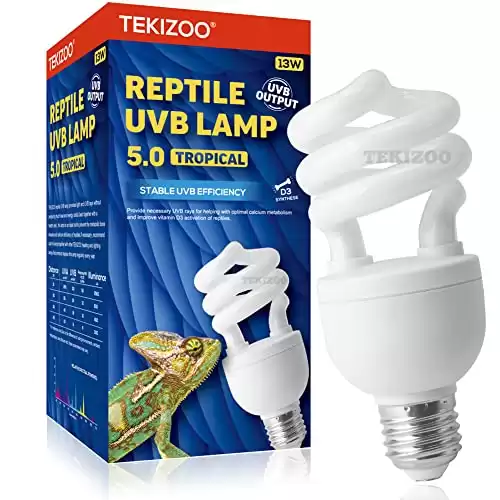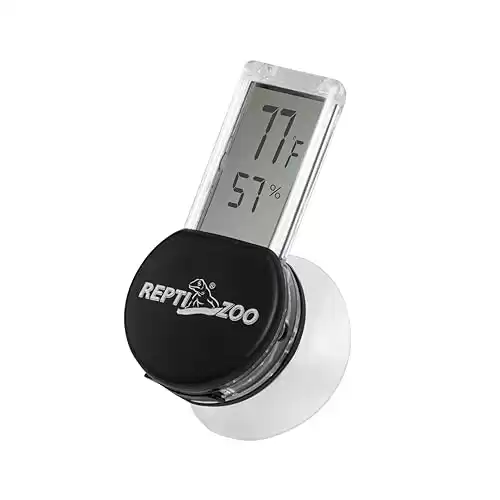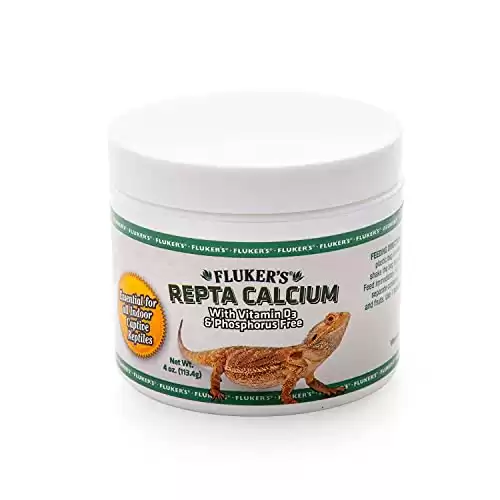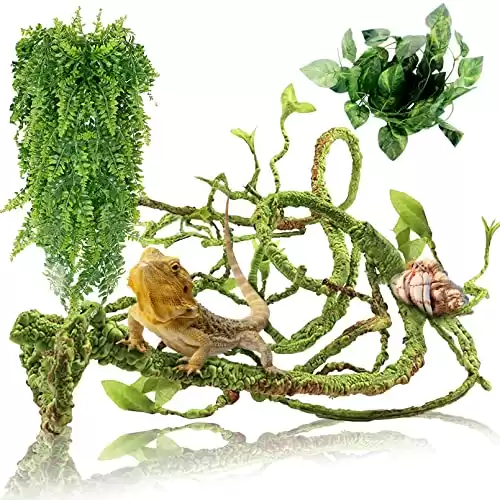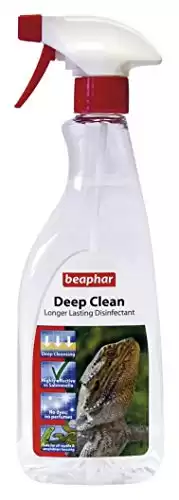Your scaly friend isn’t just a pet; it’s part of your family. So, what do you do when your chameleon isn’t its usual vibrant self?
This article is a guide on nursing your sick veiled chameleon back to health. It covers everything from signs of illness in a veiled chameleon and how to care for your pet to when it’s time to seek professional help.
Let’s jump right into it!
Recognizing Signs of a Sick Veiled Chameleon
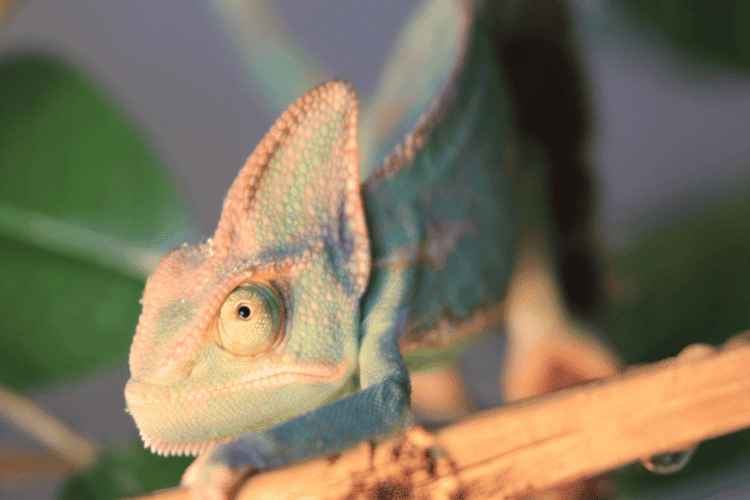
Like any reptile, your chameleon can have a variety of illnesses, and there are different symptoms associated with each illness. Recognizing the signs of illness are the improtant first step to working out how to make your chameloen feel better.
Here are some common signs that your chameleon might be sick:
- Loss of Appetite: If your usually voracious eater suddenly shows no interest in food, it’s a red flag. Keep an eye on this, as a lack of nutrition can worsen their condition.
- Swollen Belly: A distended abdomen could indicate digestive issues or egg-related problems in females. It’s important not to ignore this symptom.
- Respiratory Issues: Wheezing, gasping, or any labored breathing is a sign of trouble. “Respiratory Infections” are common among chameleons and require prompt attention.
- Changes in Color: Healthy chameleons display vibrant hues. If yours appears dull or dark, it could indicate stress or illness.
- Orange Urate or poop: Check their waste. If you notice an abnormal orange or yellow color in their urate, it might be a sign of dehydration or kidney issues.
Common Diseases and Infections in Chameleons
Understanding the specific health issues that veiled chameleons can face is crucial for providing the right care and treatment.
Let’s take a closer look at some of the common diseases and infections that might affect your chameleon:
- Respiratory Infections: These are among the most prevalent health concerns in chameleons. Symptoms include wheezing, open-mouth breathing, and nasal discharge. Respiratory infections can be triggered by improper humidity levels or exposure to drafts.
- Bacterial Infections: Chameleons can develop bacterial infections, often as a result of wounds or injuries. Watch out for swollen areas, abscesses, or open sores.
- Nutritional Deficiency: A lack of dietary
calcium can lead to metabolic bone disease, causing weakened bones, tremors, and difficulty moving. Ensuring your chameleon receives enough dietarycalcium and UVB exposure is crucial in preventing this condition. - Egg-Binding (Females): Female chameleons can experience difficulties laying eggs, which can be life-threatening if not addressed promptly. Signs include a swollen abdomen and lethargy.
- Gastrointestinal Parasites: Internal parasites like worms can affect your chameleon’s digestive system. Symptoms may include weight loss, lethargy, and changes in fecal matter.
- Mouth Rot: Also known as stomatitis, mouth rot is a bacterial infection that affects the oral cavity, causing swollen gums, difficulty eating, and drooling.
- Skin and Shell Infections: Chameleons can suffer from skin and shell infections, often due to improper hygiene or housing conditions. Look out for lesions, discoloration, or shell deformities in certain species.
Creating a Nurturing Environment
Now that you can recognize when your veiled chameleon isn’t feeling its best, let’s talk about how to create the ideal environment for its recovery and overall well-being.
Here’s what you need to know:
- Humidity Level: Veiled chameleons hail from tropical regions, so maintaining the right humidity level in their enclosure is crucial. Aim for a humidity level of around 50-70%. You can achieve this by misting the enclosure with warm water regularly.
- Heat Lamps: Chameleons are cold-blooded creatures, and they rely on external heat sources to regulate their body temperature. Install heat lamps to create a temperature gradient within their enclosure. The basking spot should be around 85-95°F (29-35°C), while the cooler side should stay around 70-80°F (21-27°C).
- Proper Lighting: Veiled chameleons also require UVB lighting to metabolize
calcium properly. Make sure to provide them with a UVB light source, following the manufacturer’s recommendations. - Enclosure Size: Chameleons are arboreal creatures, meaning they love to climb and explore. Opt for a spacious and vertically oriented enclosure with plenty of branches and foliage for them to perch on.
- Clean Water: Ensure your chameleon has access to clean, fresh, and preferably warm water for drinking. Use a shallow dish to make it easily accessible.
Proper Nutrition for a Sick Chameleon
Good nutrition is essential for your veiled chameleon’s recovery. Here’s what you need to know about nourishing your sick chameleon:
- Dietary
Calcium : Calcium is a critical component of a chameleon’s diet, especially for bone health. Ensure your chameleon is getting enoughcalcium by providingcalcium -rich foods like dusted insects (e.g., crickets, mealworms, and dubia roaches) or specializedcalcium supplements. Dusting the insects withcalcium powder before feeding is a common practice.
- Varied Diet: Just like us, chameleons appreciate variety in their meals. Offer a diverse range of insects and occasional treats like fruit flies and silkworms to provide essential nutrients.
- Hydration: Proper hydration is vital. Offer your chameleon fresh, clean water daily. You can encourage drinking by misting their enclosure and allowing them to drink droplets off leaves.
- Adjusting Feeding Habits: Sick chameleons may not have the same appetite as healthy ones. If your chameleon is eating less due to illness, focus on providing smaller but more frequent meals to ensure they’re getting the nutrition they need.
- Avoid Overfeeding: While you want to ensure your chameleon gets the nutrition it needs, overfeeding can lead to obesity and digestive issues. Monitor their food intake and adjust accordingly.
Seeking Professional Help
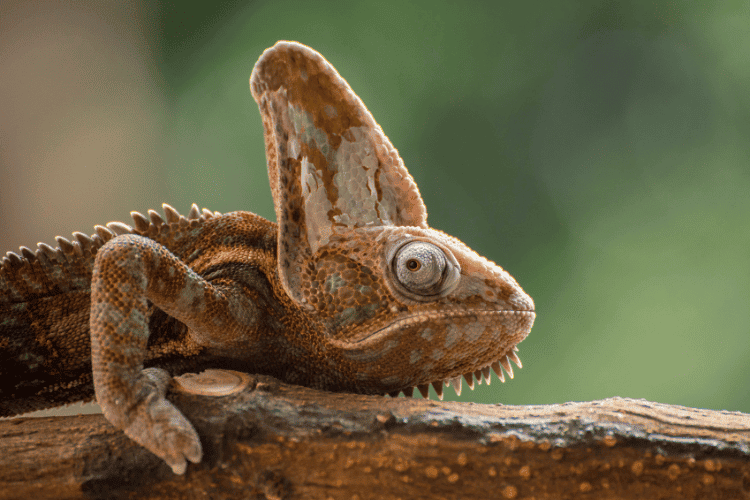
When it comes to your veiled chameleon’s health, sometimes you’ll need to call in the experts. A reptile veterinarian can be a lifesaver in critical situations.
Here’s why and how to seek professional help:
- The Importance of a Reptile Veterinarian: Not all veterinarians are experienced with reptiles, so it’s crucial to find a specialized “Reptile Veterinarian” who understands the unique needs of chameleons. These experts are well-versed in diagnosing and treating reptilian ailments.
- Regular Check-Ups: Even if your chameleon seems healthy, regular check-ups with a reptile vet are essential. These check-ups can catch potential issues early, leading to quicker and less expensive treatments.
- Diagnostic Tests: Reptile veterinarians have access to specialized diagnostic tools and tests that can identify illnesses and their causes more accurately. They may conduct blood tests, X-rays, or fecal exams to determine the root of the problem.
- Treatment Plans: If your chameleon is sick, a reptile vet will create a tailored treatment plan. This may involve medications, dietary changes, or adjustments to the habitat conditions.
- Emergency Situations: In emergencies or when your chameleon’s condition deteriorates rapidly, don’t hesitate to seek immediate veterinary assistance. Time can be critical in saving your pet’s life.
- Finding a Qualified Veterinarian: Look for recommendations from fellow chameleon owners, visit online forums like “Chameleon Forums,” or contact local reptile clubs or associations to find a trusted reptile veterinarian in your area.
Gender-Specific Considerations
While caring for your veiled chameleon, it’s essential to be aware of gender-specific concerns, as males and females have distinct needs and health considerations.
Female Chameleons
- Reproductive Health: Female veiled chameleons can lay eggs, even without a male present. It’s crucial to provide them with a suitable place to dig and lay their eggs to prevent egg-binding, a potentially life-threatening condition.
- Calcium Requirements: Egg production depletes
calcium levels in female chameleons. Ensure they receive adequate dietarycalcium and UVB exposure to prevent metabolic bone disease.
Male Chameleons
- Territorial Behavior: Male veiled chameleons can be territorial and aggressive towards other males. Be cautious when housing them together, and ensure they have sufficient space to establish their territories.
- Reproductive Behavior: Males often display vibrant colors and engage in courtship behaviors when in the presence of females. While this is normal, excessive stress from constant exposure to females can impact their health.
Emotional Support and Monitoring
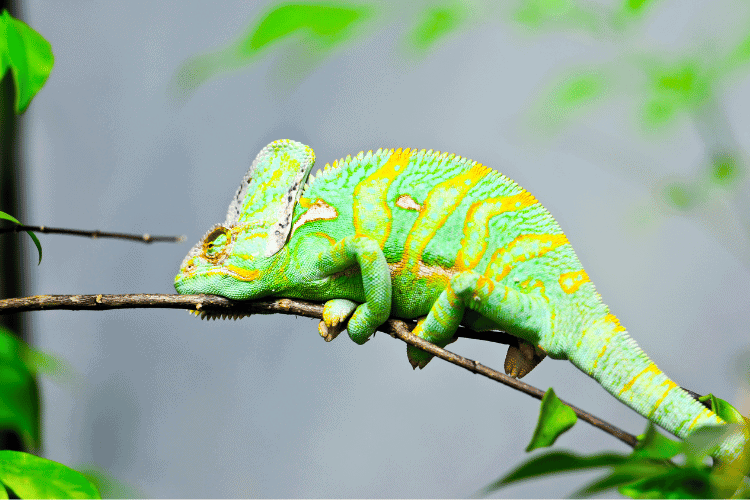
Caring for a sick chameleon goes beyond physical health; emotional support and attentive monitoring are equally vital for their recovery.
Here’s how you can offer emotional care and keep a close eye on your chameleon’s progress:
- Gentle Interaction: While chameleons may not be as affectionate as some pets, they can still benefit from gentle interaction. Approach your chameleon calmly and avoid sudden movements to reduce stress.
- Quiet Environment: Minimize loud noises and disturbances around their enclosure. A calm and quiet environment helps reduce stress and aids in recovery.
- Observation: Spend time observing your chameleon’s behavior. Note any changes in their activity level, coloration, or eating habits. Keep a journal to track their progress and share these observations with your reptile veterinarian during check-ups.
- Isolation If Necessary: In some cases, it might be necessary to isolate your sick chameleon from other pets to reduce stress and prevent potential injuries.
- Be Patient: Recovery takes time, and not all chameleons respond to treatment at the same rate. Be patient and continue providing the recommended care even if improvements are gradual.
- Maintain Routine: Stick to a consistent routine when it comes to feeding, misting, and lighting. Chameleons thrive on predictability, and a routine can help reduce stress during the healing process.
- Emotional Bond: While chameleons may not express emotions in the way mammals do, they can form bonds with their caregivers. Consistent care and a sense of security can contribute to their overall well-being.
Wrapping Up
Caring for a sick veiled chameleon may seem daunting, but with the right knowledge and commitment, you can help your reptilian friend recover and thrive.
From recognizing signs of illness to providing a suitable environment, proper nutrition, and seeking professional help when needed, you have the tools to ensure their well-being.
Remember, emotional support matters too!

